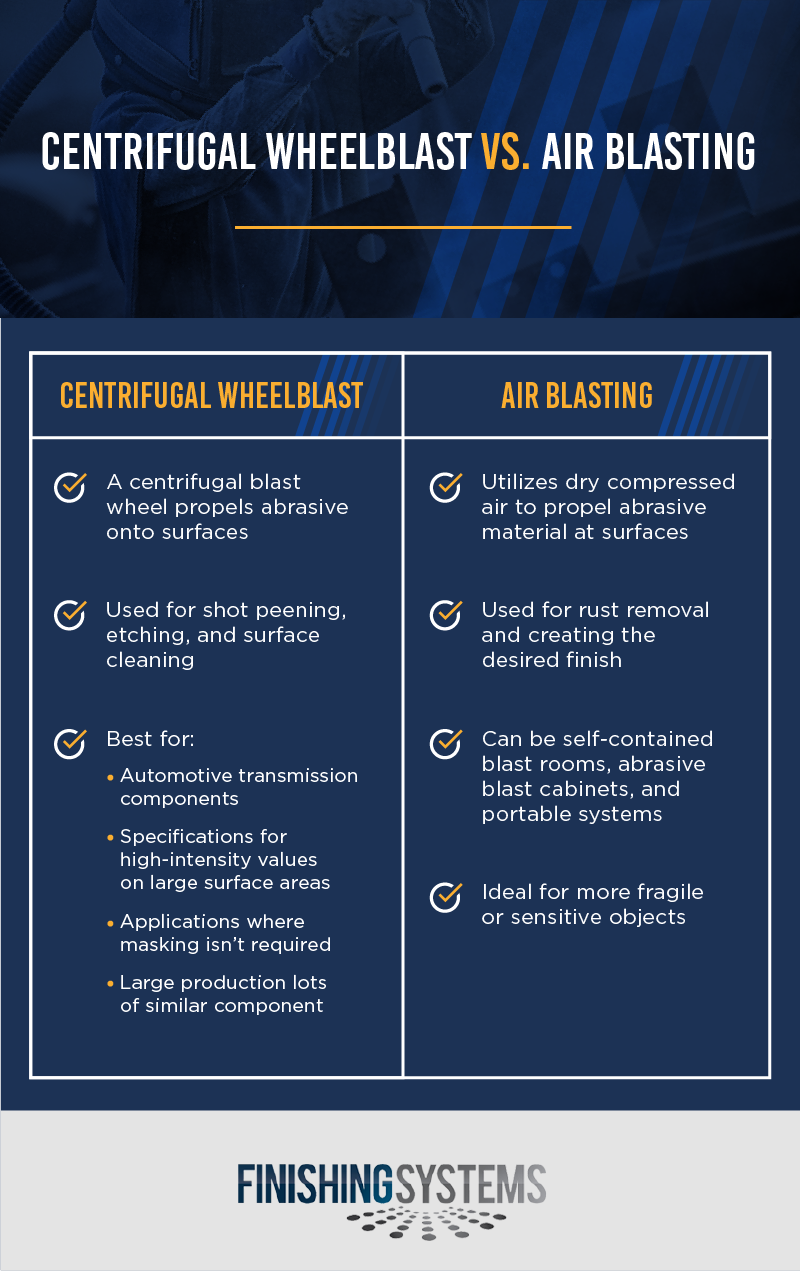Centrifugal Wheelblast vs. Air Blasting: Which Is Right for You?
When it comes to abrasive blasting, choosing the right method can make a big difference in efficiency, cost, and quality. Whether you're looking to clean, etch, peen, or descale metal parts, both wheel blasting and air blasting offer unique advantages. The decision between the two often depends on the size, shape, and quantity of your components, as well as the desired finish. With so many options available—different media types, blast methods, and equipment configurations—it's easy to feel overwhelmed. If you're trying to decide when to use wheel blasting versus air blasting, this guide will help you understand the key differences and choose the best option for your needs. Contact Us Wheel blasting uses a high-speed centrifugal blast wheel to propel abrasive media onto the surface of your parts. This method is commonly used for shot peening, surface cleaning, and etching. Unlike air blasting, which relies on compressed air, wheel blasting uses mechanical force to deliver a consistent and powerful blast across all surfaces. Wheel blasting machines are typically either direct-driven or belt-driven, with variable frequency drive (VFD) models allowing for speed adjustments. The faster the wheel spins, the more aggressive the blasting action. This makes wheel blasting ideal for large-scale production and heavy-duty applications. Some of the best applications for wheel blasting include: The process involves loading your parts into a chamber where the blast wheel propels metallic abrasives like steel shot, grit, or wire cut materials. Due to its efficiency, wheel blasting is often preferred for larger objects and high-volume runs. Air blasting, also known as sandblasting, uses compressed air to propel abrasive media onto the surface of your parts. This method is versatile and widely used for tasks such as rust removal, surface preparation, and achieving specific finishes. Air blasting systems come in various forms, including enclosed blast rooms, cabinet systems (either direct pressure or suction type), and portable units. These systems are ideal for smaller or more delicate parts that require precise control over the blasting process. One of the main benefits of air blasting is its flexibility. It allows for fine-tuned adjustments in pressure and media type, making it suitable for sensitive or intricate components. Additionally, dust collection systems ensure a cleaner and safer working environment. When comparing wheel blasting and air blasting, consider factors like part size, production volume, and required finish. Wheel blasting is faster and more efficient for large, durable components, while air blasting offers greater control and is better suited for smaller or fragile parts. If you're working with delicate items or need a customized finish, an air blasting system may be the better choice. On the other hand, if you're dealing with high-volume production or heavy-duty parts, wheel blasting can save time and reduce costs. Whether you're unsure about which blasting method suits your application or looking to install new equipment, Finishing Systems has the expertise and equipment to help. From a wide range of blasting media to advanced finishing solutions, we can tailor a system that meets your specific requirements. For more information or to discuss your needs, contact us today.
Professional Electric Oven manufacturer is located in China, including Freestanding Electric Oven,Electric Toaster Oven,Electric Desk Oven, etc.
Electric Oven,Freestanding Electric Oven,Electric Toaster Oven,Electric Desk Oven Jiangmen Minsheng Kitchen Equipment Co.,Ltd , https://www.minshengchina.comCentrifugal Wheelblast vs. Air Blasting: Which Is Right for You?
Updated: October 17, 2023
What Is Wheel Blasting?

What Is Air Blasting?
Choosing the Right Method for Your Needs
Work With Finishing Systems to Find the Best Solution